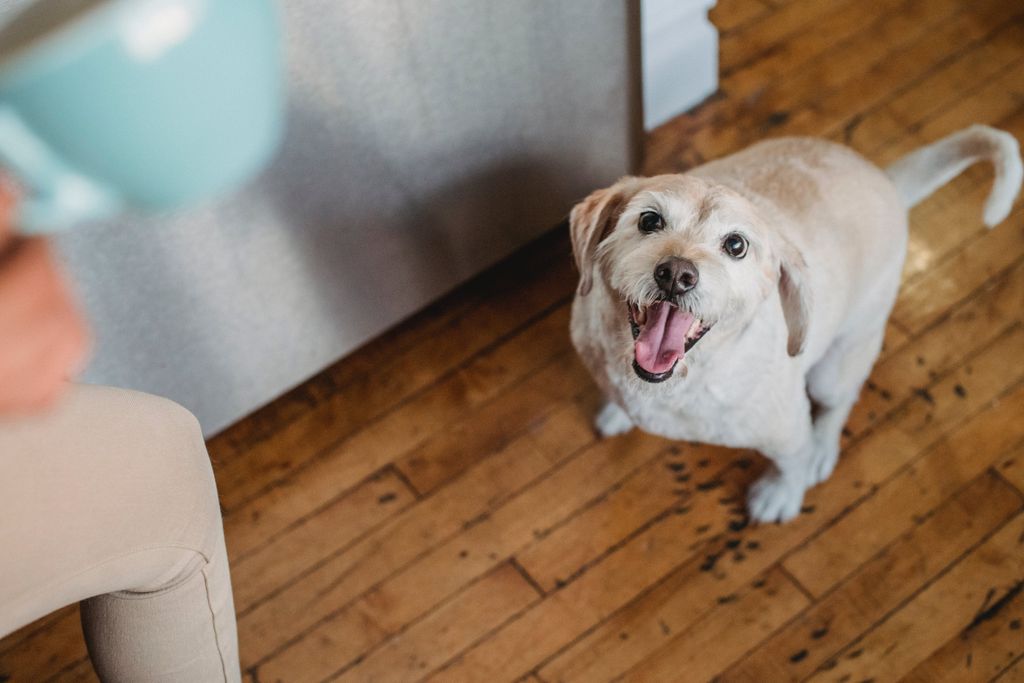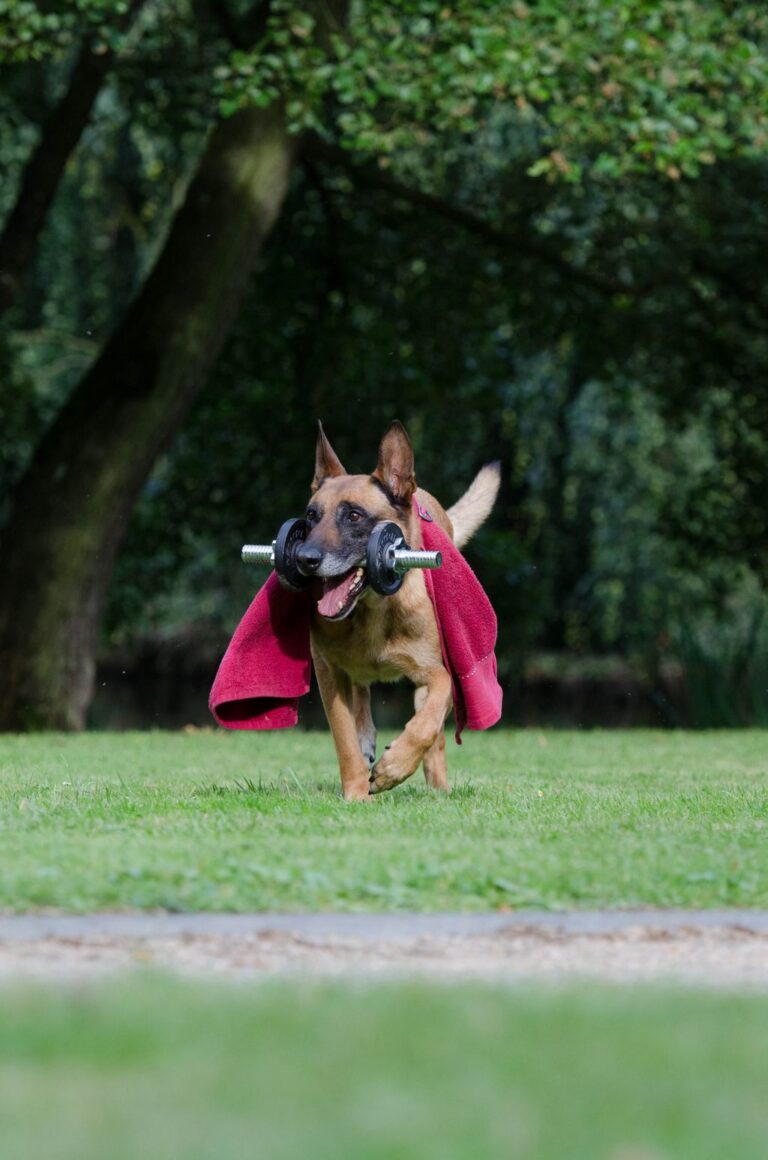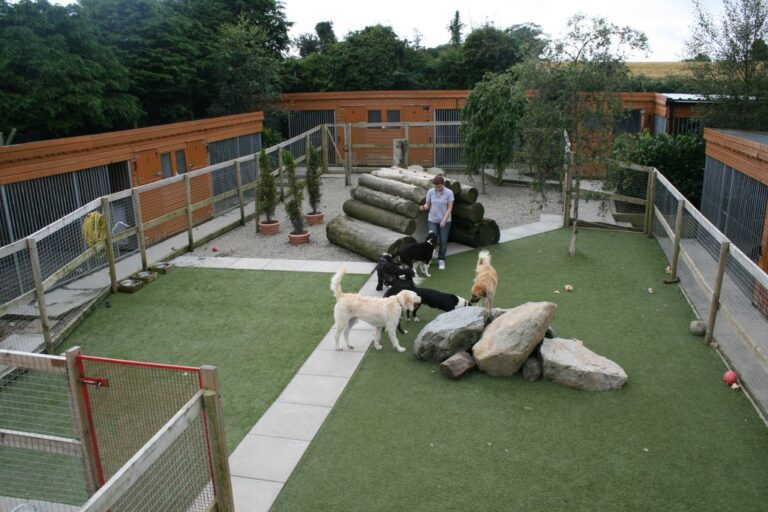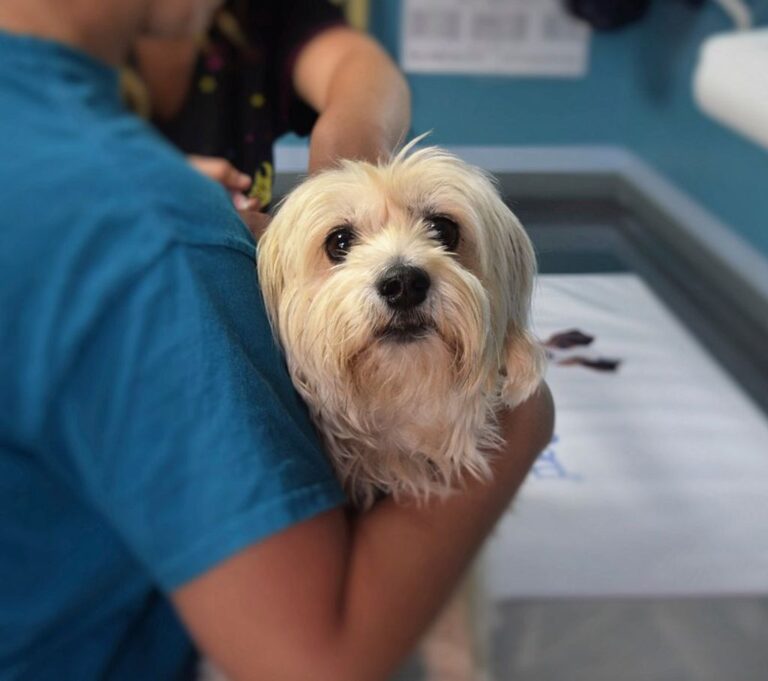Helping Dogs Overcome Separation Anxiety: Tips and Strategies
Dealing with separation anxiety in dogs can be challenging for both the pet and the owner. It’s hard to see your furry friend distressed whenever you leave the house. However, there are ways to help ease their anxiety and make being alone more manageable for them. Understanding the root causes and implementing effective strategies can make a world of difference in your dog’s well-being.
Key Takeaways
- Understanding separation anxiety in dogs is crucial for addressing and managing the problem.
- Creating a safe and comfortable environment can help alleviate separation anxiety.
- Establishing a consistent routine with regular exercise and mental stimulation is beneficial for dogs with separation anxiety.
- Gradual desensitization and counterconditioning techniques can help dogs overcome separation anxiety.
- Seeking professional help, such as consulting with a veterinarian or considering behavioral therapy, is important for severe cases of separation anxiety.
Understanding Separation Anxiety in Dogs

What is Separation Anxiety?
Separation anxiety in dogs is essentially a fear of being alone, similar to a panic attack in humans. It occurs when a dog is separated from the person or people they are hyper-attached to. This can lead to various behaviors such as increased vocalization, destructive chewing, and excessive pacing. It’s important to recognize the signs of separation anxiety in your dog and take steps to help them overcome it.
Causes of Separation Anxiety in Dogs
Separation anxiety in dogs can be triggered by changes to the amount of time that we spend with our pets and the following situations: The family going back to work and school after a long summer holiday, Returning to the office after maternity or parental leave, Going back to work after being unemployed or working from home for an extended period. These changes in routine can disrupt the dog’s sense of security and familiarity, leading to anxiety and distress. Additionally, rescue dogs or dogs with a history of abandonment may be more prone to separation anxiety.
Recognizing the Signs of Separation Anxiety
Before implementing strategies, it’s crucial to recognize the signs of separation anxiety in pets. Common indicators include excessive vocalization, destructive behavior, house soiling, pacing, and attempts to escape. Identifying these signs early allows for prompt intervention.
Certain factors may increase the likelihood of separation anxiety, such as changes in routine, moving to a new home, or a history of abandonment. Understanding these risk factors helps tailor preventive measures to address specific needs.
It’s essential to distinguish between boredom and separation anxiety. While both can result in destructive behavior, separation anxiety is rooted in distress caused by the absence of a trusted caregiver. This
Creating a Safe and Comfortable Environment

Designating a Relaxation Space
When helping our dogs overcome separation anxiety, one important step is to designate a safe and comfortable relaxation space for them. This area should be quiet and free from distractions, allowing our dogs to feel secure and at ease. Providing comfortable bedding, toys, and familiar scents can further enhance their sense of security. Positive reinforcement is also key in creating a positive association with this space. Rewarding our dogs’ calm behavior with treats or praise helps them associate the relaxation space with positivity rather than fear.
Providing Interactive Toys and Puzzles
Interactive toys play a crucial role in mental stimulation. They not only keep your dog busy but also challenge their problem-solving skills. Here’s a table showcasing some of the best interactive toys for home use:
| Toy Type | Recommended Toy |
|---|---|
| Puzzle Feeder Dog Toy | Puzzle Feeder Dog and Cat Toy |
| Colourful Snuffle Ball | Colourful Snuffle Ball Dog Toy |
| Dog Casino Puzzle Toy | Dog Casino Nina Ottosson Puzzle Toy |
| Paws for Life Puzzle | Paws for Life IQ Dog and Cat Puzzle |
| Nina Ottosson Dog | Nina Ottosson Dog Twister |
Interactive toys offer a range of benefits, from reducing anxiety to improving cognitive functions. They enhance cognitive skills, reduce boredom and destructive behavior, provide physical exercise, and strengthen the bond between you and your dog. When choosing interactive toys, consider factors such as safety and durability, ease of cleaning, and the types of mental stimulation they provide. Food puzzles can also be used as a way to feed your dog, promoting better digestion. It’s recommended to rotate your dog’s toys every few days or weekly to keep them interested and prevent boredom. Introducing new toys or bringing back ones that have been put away can create excitement and mental stimulation.
Using Calming Music or White Noise
When it comes to helping our furry friends overcome separation anxiety, we’ve found that using calming music or white noise can make a big difference. Nature sounds like rainfall, ocean waves, and gentle winds have a calming effect on dogs. They create a soothing atmosphere that helps them relax and feel more secure. Another option is white noise, which provides a constant and soothing auditory backdrop. It helps drown out other sounds that may trigger anxiety in dogs. By playing calming music or white noise, we can create a serene environment that helps our dogs feel more at ease.
Establishing a Consistent Routine

Regular Exercise and Mental Stimulation
Regular exercise and mental stimulation are crucial for keeping our dogs happy and healthy. We all know that physical exercise is important for burning off excess energy and keeping our furry friends physically fit. But did you know that mental exercise is just as important? Engaging our dogs’ brains can help reduce boredom and prevent destructive behaviors. That’s why it’s essential to find activities that provide both physical and mental stimulation.
Here are some ideas for incorporating mental engagement into your dog’s exercise routine:
- Training Sessions: Incorporate training into playtime. Commands like sit, stay, or fetch involve both mental focus and physical movement.
- Agility Training: Set up a simple agility course in your backyard. It’s a fun way to get physical exercise and mental stimulation.
- Nature Walks: Explore new trails or parks. The new environments provide mental stimulation through new scents, sights, and sounds.
- Interactive Play: Games like fetch or tug-of-war not only provide physical exercise but also require mental engagement.
By integrating these exercises into your dog’s daily routine, you can significantly improve their mental and physical well-being. A healthy dog is a happy dog, and the right balance of mental and physical stimulation is key to achieving this.
Scheduled Feeding Times
Try to keep your dog’s feeding and playtime schedule consistent with their usual routine. This helps create a sense of predictability and security, which can reduce anxiety. Interactive toys and puzzles are a great way to keep your dog mentally stimulated during alone time. Treat-dispensing toys can be particularly effective in keeping them occupied and content. Early socialization and basic training are important for a well-adjusted pet. Exposure to different environments, people, and situations can help build confidence and reduce the likelihood of separation anxiety. It’s also helpful to establish a routine for leaving your dog alone for short periods of time, gradually increasing the duration as they become more comfortable. Remember to provide them with something entertaining, like dinner and a treat, to keep them occupied. Seeking professional help, such as consulting with a veterinarian or working with a professional trainer, can also be beneficial in managing separation anxiety.
Setting Departure and Arrival Rituals
When it comes to setting departure and arrival rituals, we’ve found that consistency is key. Our furry friends thrive on routine, so establishing a predictable pattern can help alleviate their anxiety. Here are a few tips to make these moments less stressful:
- Practice short departures and returns throughout the day to normalize your comings and goings. This helps your pet understand that your departures are temporary and that you’ll always return.
- Ignore attention-seeking behavior before leaving and upon returning. By not giving in to their demands for attention, you reduce the emotional significance of departures and arrivals.
- Consider counter-conditioning with treats. Associate a positive experience with being alone by offering treats or engaging in a favorite activity just before leaving and immediately upon returning. This helps create positive associations with your absence.
Remember, every dog is unique, so it’s important to find what works best for your furry companion. If you’re struggling to manage their separation anxiety, don’t hesitate to seek professional training assistance. A professional animal behaviorist or trainer can provide personalized strategies and guidance to help your dog overcome their anxiety.
Gradual Desensitization and Counterconditioning

Introducing Short Periods of Alone Time
Once your dog is comfortable in their designated relaxation space and has access to interactive toys and puzzles, it’s time to start introducing short periods of alone time. This is an important step in helping your dog overcome separation anxiety. Gradually increase the amount of time you spend away from your dog, starting with just a few minutes and gradually working your way up to longer periods. Reward your dog with treats or praise for calm behavior during these alone times. It’s important to remember that every dog is different, so be patient and adjust your approach based on your dog’s responses.
Rewarding Calm Behavior
Reward your dog’s calm behavior with treats or praise to reinforce positive associations during stressful situations. This helps them associate those scenarios with positivity rather than fear. Positive reinforcement is a powerful tool in training dogs and can be especially effective in helping them overcome separation anxiety. By rewarding calm behavior, you are encouraging your dog to remain calm and relaxed when you are not around. This can help reduce their anxiety and make them feel more secure in their environment.
Working with a Professional Trainer
When it comes to helping our furry friends overcome separation anxiety, working with a professional trainer can be a game-changer. Their expertise and experience can provide us with the guidance and support we need to tackle this challenge head-on. A professional trainer can assess our dog’s specific needs and develop a personalized training plan that addresses their anxiety. They can teach us effective techniques and strategies to gradually desensitize our dog to being alone and help them develop coping mechanisms. With their help, we can create a safe and comfortable environment that promotes relaxation and reduces anxiety.
Seeking Professional Help

Consulting with a Veterinarian
When dealing with separation anxiety in dogs, it’s important to seek guidance from a veterinarian. They can provide valuable insights and recommendations based on their expertise. A veterinarian will be able to assess your dog’s specific situation and help determine the best course of action. They may recommend a comprehensive medical evaluation to rule out any underlying health issues that could be contributing to the anxiety. Additionally, they can provide guidance on prescription medications that may be necessary for severe cases of separation anxiety. It’s important to follow the veterinarian’s guidance when it comes to medication, as they will prescribe and administer it in the safest and most effective way. In some cases, holistic approaches such as acupuncture or herbal supplements may also be explored under the guidance of a veterinarian. Remember, consulting with a veterinarian is an essential step in addressing separation anxiety in dogs.
Exploring Medication Options
When it comes to helping our furry friends overcome separation anxiety, medication can be a useful tool. There are several different medications that can be prescribed to alleviate dog anxiety, each with its own effectiveness and potential side effects. Consulting with a veterinarian is essential to determine the most suitable medication option for your furry friend.
Understanding Different Medications
There are many medications that can be used to alleviate dog anxiety. These include antidepressant medications, benzodiazepines, selective serotonin reuptake inhibitors (SSRIs), and tricyclic antidepressants (TCAs). Let’s take a closer look at some of these options:
- Antidepressant Medication: Fluoxetine and clomipramine are commonly prescribed antidepressants for dogs.
- Benzodiazepines: Alprazolam is a benzodiazepine that provides fast-acting relief from anxiety in dogs. It has a sedative effect and is often used during stressful situations such as thunderstorms or fireworks.
- Selective Serotonin Reuptake Inhibitors (SSRIs): SSRIs like fluoxetine work by increasing serotonin levels in the brain, which helps regulate mood and reduce anxiety in dogs.
- Tricyclic Antidepressants (TCAs): Clomipramine is the first FDA-approved treatment for separation anxiety in dogs. It can also be prescribed for other types of anxiety. It’s a tricyclic antidepressant that works by altering brain chemistry to reduce anxiety symptoms.
Considering Behavioral Therapy
Behavioral therapy is an effective approach for helping dogs overcome separation anxiety. It involves working with a professional trainer who specializes in behavior modification techniques. Through behavioral therapy, we can address the underlying causes of separation anxiety and develop strategies to manage and reduce the dog’s anxiety levels. This may include desensitization exercises, counterconditioning techniques, and creating a structured routine. By implementing behavioral therapy, we can help our furry friends feel more comfortable and confident when left alone.
Conclusion
In conclusion, separation anxiety in dogs can be distressing, but with understanding and patience, it can be managed effectively. By gradually building independence, creating a safe space, providing exercise and mental stimulation, and seeking professional help if needed, you can help your furry friend overcome their anxiety and lead a happier, more relaxed life. Remember, every dog is unique, so it may take time to find the right strategies that work for your pet. But with love and care, you can make a positive difference in their well-being.
Frequently Asked Questions
What is separation anxiety in dogs?
Separation anxiety in dogs is a condition where a dog becomes distressed when separated from their owner. This can lead to destructive behaviors such as excessive barking, chewing furniture, or even attempts to escape.
What are the signs of separation anxiety in dogs?
The signs of separation anxiety in dogs can include excessive drooling, pacing, destructive behaviors, excessive barking, urinating or defecating indoors, and attempts to escape.
What are the causes of separation anxiety in dogs?
Separation anxiety in dogs can be caused by various factors, including a history of abandonment or neglect, a change in environment or routine, traumatic experiences, lack of socialization, or a strong attachment to the owner.
How can I help my dog cope with separation anxiety?
There are several strategies that can help dogs cope with separation anxiety, including gradually desensitizing them to being alone, creating a safe and comfortable environment, providing mental stimulation and interactive toys, establishing a consistent routine, and seeking professional help if needed.
Can separation anxiety in dogs be cured?
While separation anxiety in dogs may not be completely cured, it can be managed effectively with the right strategies and support. With patience, consistency, and professional guidance, dogs with separation anxiety can lead happier and more relaxed lives.
When should I seek professional help for my dog’s separation anxiety?
If your dog’s separation anxiety is severe and significantly affecting their well-being or if you have tried various strategies without success, it is recommended to seek professional help from a veterinarian or a qualified dog behaviorist. They can provide a proper diagnosis and develop a tailored treatment plan for your dog.






